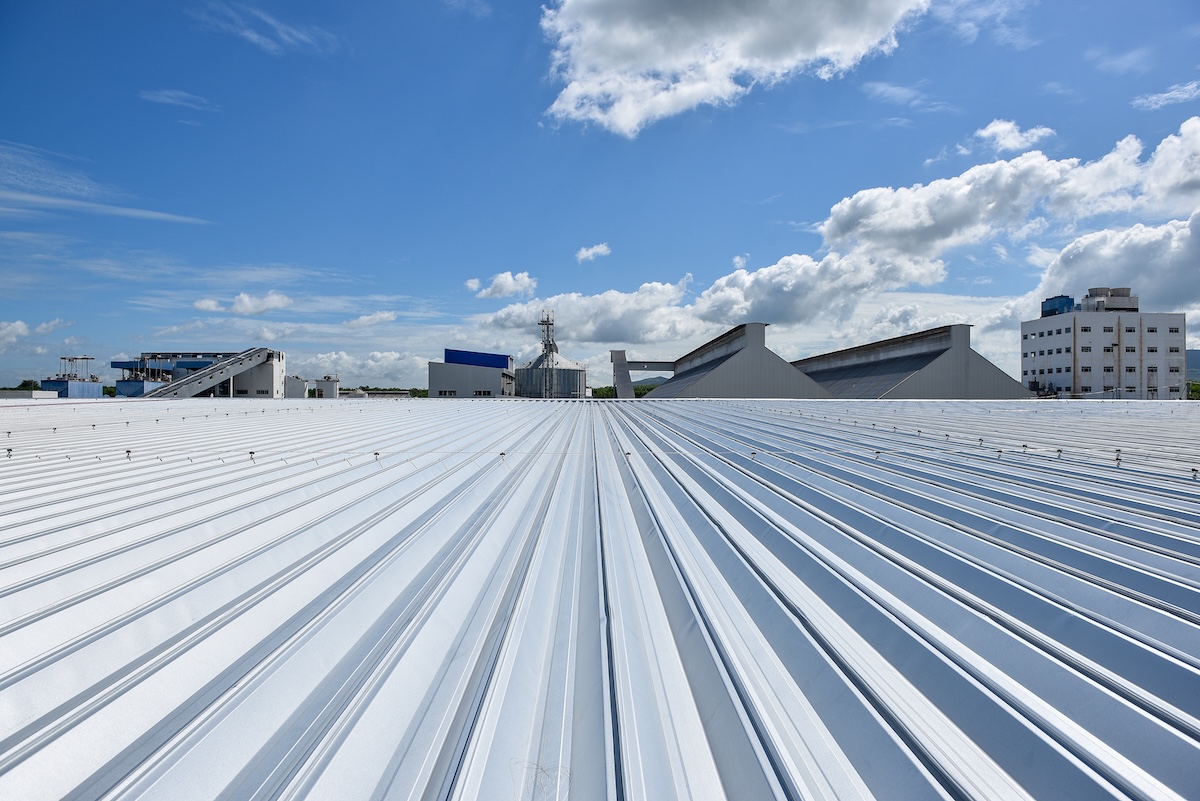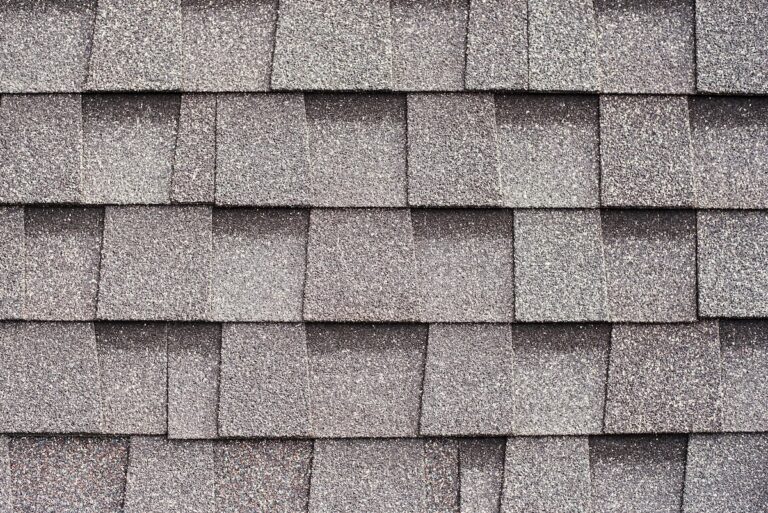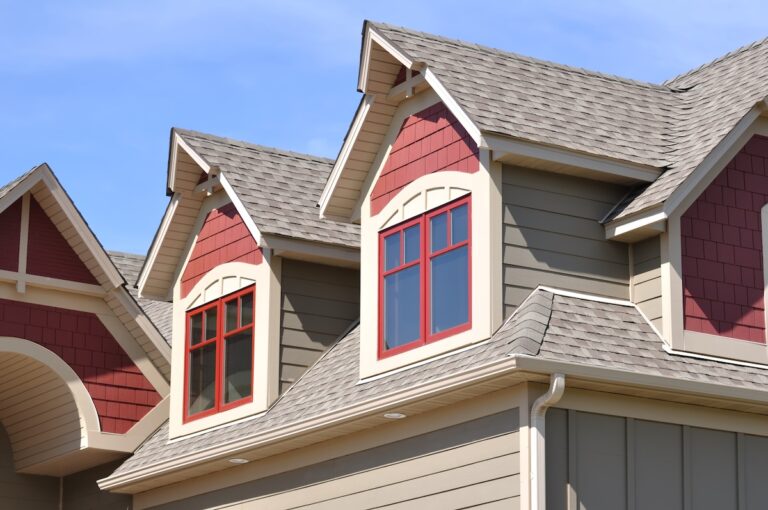A flat metal roof can be a smart and durable choice for commercial buildings, but like any roofing system, it comes with both advantages and drawbacks. Whether you’re overseeing a facility upgrade or planning new construction, knowing what to expect from this type of roofing can help you make a more informed decision.
This guide is designed for business owners and property managers who are weighing their roofing options. If you’re thinking about installing a flat metal roof, here’s what you should consider:
- Long-term benefits that can outweigh initial installation costs
- Potential challenges related to water drainage and noise
- Key factors that impact performance and durability
Let’s break down the major pros and cons so you can decide if this system fits your building’s needs.
🏢 Why Choose a Flat Metal Roof?
Metal roofing has a long-standing reputation for durability and low maintenance. Although more common on sloped roofs, metal is also gaining popularity on flat or low-slope commercial buildings.
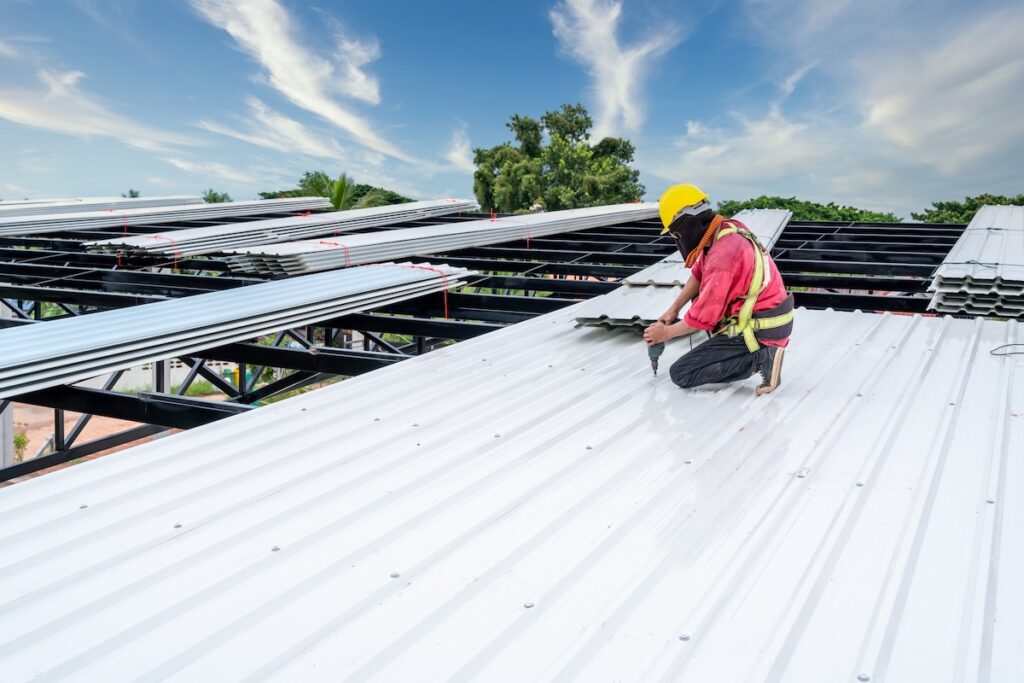
What Makes Metal a Good Option?
Metal stands out for its strength and longevity. Benefits include:
- Resistance to high winds and fire
- Minimal maintenance compared to traditional systems
- Compatibility with solar panels and energy-efficient upgrades
These features make it a solid investment for many business properties.
Common Applications
Flat metal roofs are often used on:
- Warehouses and industrial buildings
- Retail centers and strip malls
- Office complexes and schools
- Buildings where durability and appearance both matter
Understanding your building’s use and traffic levels helps determine if metal is the right fit.
⭐️ Materials Used for Flat Metal Roofs
Several types of metal are used in flat roofing systems, each with unique characteristics.
Types of Metal
Common materials include:
- Galvanized steel: Cost-effective and corrosion-resistant
- Aluminum: Lightweight and naturally resistant to rust
- Copper: Premium material with a distinct look and long lifespan
- Zinc: Highly durable and forms a self-healing patina
Material choice affects everything from performance to curb appeal.
Panel Configurations
There are a few different ways metal panels can be installed on flat roofs:
- Standing seam panels: Vertical ribs with hidden fasteners
- Corrugated panels: More visible seams, often used in industrial settings
- Flat lock panels: Seamless look for architectural builds
The configuration you choose will impact cost and weather protection.
✅ 8 Pros & Cons of Flat Metal Roofs
Knowing both the benefits and the drawbacks will help you make a well-rounded decision. Here are the major pros and cons:
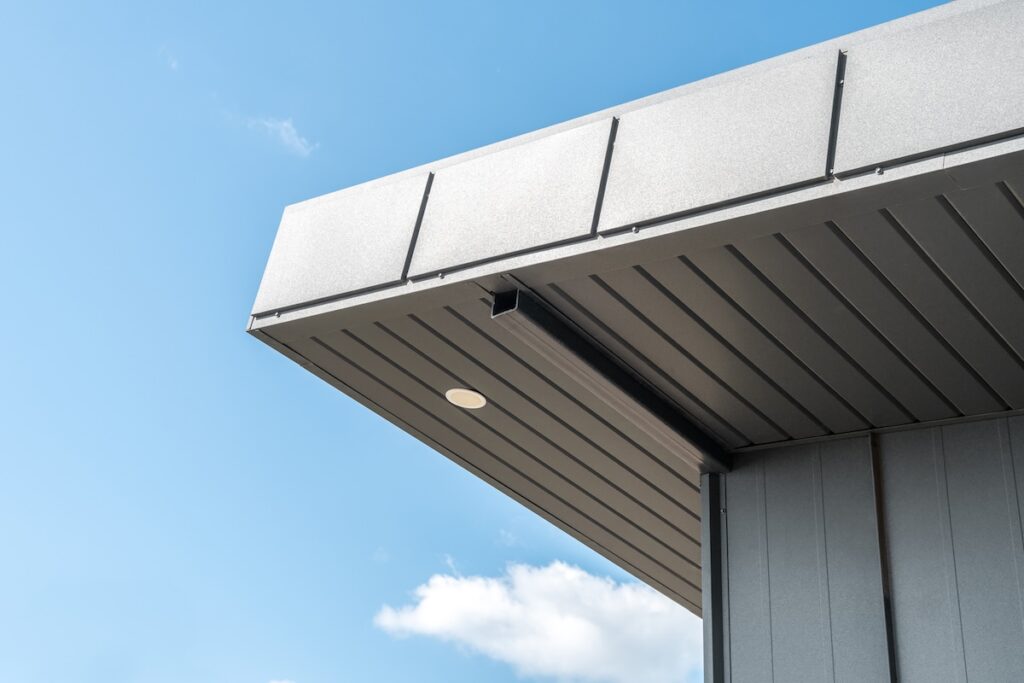
1. Longevity
- Pro: Flat metal roofs can last 40 years or more when properly installed. They resist common issues like rot, insect damage, and UV degradation.
- Con: Upfront installation costs are typically higher than single-ply systems or asphalt-based roofs.
2. Durability
- Pro: Metal handles high winds, hail, and fire better than many other materials. It holds up under tough conditions and heavy foot traffic.
- Con: Without proper drainage, standing water can cause corrosion over time—especially in low-quality metal systems.
3. Energy Efficiency
- Pro: Reflective metal surfaces help reduce cooling costs by deflecting solar heat, especially with lighter-colored or coated panels.
- Con: In colder climates, energy savings may be less significant, and snow accumulation could become a concern without proper pitch or heating systems.
4. Low Maintenance
- Pro: Unlike built-up or membrane roofs, metal requires minimal upkeep. Occasional inspections and simple cleaning are usually enough.
- Con: Repairs may be more expensive due to the need for special tools and materials if seams or panels are damaged.
5. Environmental Impact
- Pro: Metal roofing is often made from recycled materials and is 100% recyclable at the end of its life cycle.
- Con: The energy-intensive manufacturing process of some metals may offset initial sustainability benefits depending on the supplier.
6. Design Versatility
- Pro: Metal can complement both modern and industrial building designs. Custom colors and finishes allow for brand alignment and visual appeal.
- Con: Some property owners may prefer the more traditional appearance of asphalt or membrane-based systems.
7. Noise Consideration
- Pro: With proper insulation and underlayment, noise levels can be managed effectively.
- Con: Uninsulated metal roofs can be loud during heavy rain, which may not suit offices, schools, or medical facilities.
8. Installation Time
- Pro: Pre-fabricated metal panels and experienced contractors can speed up installation.
- Con: For flat roofs with structural reinforcements or added insulation, installation may take longer and require more planning.
🤔 Installation Considerations for Flat Metal Roofs
Getting a flat metal roof installed correctly requires precision and proper system planning. That’s why being guided by the expert hands of an outstanding roofing company is a must.

Roof Slope and Drainage
Metal performs best with some slope. A flat roof must be designed to:
- Channel water effectively to drains or scuppers
- Avoid ponding that leads to corrosion or leaks
- Use tapered insulation if structural slope is not available
Even a minimal slope can dramatically improve longevity.
Fasteners and Seams
Seam construction is critical in waterproofing and performance.
- Standing seam systems with concealed fasteners reduce leak potential
- Exposed fasteners may loosen over time, requiring regular inspection
- Welding or sealant techniques must be used with precision
Choosing the right seam design can reduce maintenance over time.
Insulation and Underlayment
Proper insulation boosts performance in all seasons. Consider:
- Rigid insulation boards to meet local energy codes
- Sound-dampening underlayments for interior comfort
- Vapor barriers to prevent condensation
These layers protect both the roof and the building interior.
👉 Is a Flat Metal Roof Right for Your Building?
Every roofing project is different. Here are a few quick tips to help you decide if a flat metal roof is the right choice:
Choose Metal If:
- You want a roof that lasts 40+ years
- Your property faces high winds or frequent storms
- You’re adding solar panels or seeking energy savings
- You prefer minimal maintenance and long-term ROI
Consider Other Options If:
- Your budget prioritizes upfront cost savings
- Your flat roof cannot accommodate proper drainage
- You need a roofing system with easy patch repair options
Working with an renowned contractor will help you weigh these factors effectively.
👍 G. Cannon Is Your Trusted Commercial Roofing Partner
Installing a flat metal roof is a decision that brings both opportunity and responsibility. When done right, it offers outstanding durability, energy performance, and aesthetic value. But it’s also a system that demands roofing experts for installation and thoughtful planning to avoid common pitfalls.
At G. Cannon, we help business owners and property managers navigate roofing decisions with confidence. Our team understands the unique needs of commercial properties and brings precision, professionalism, and practical insight to every project.
Contact G. Cannon today for your free estimate! From design to installation, we’ll make sure your metal roof works as hard as you do, protecting your investment year after year.
